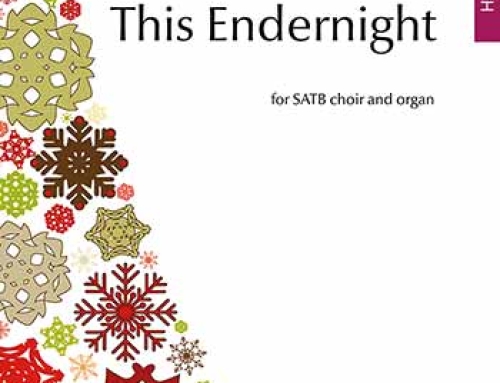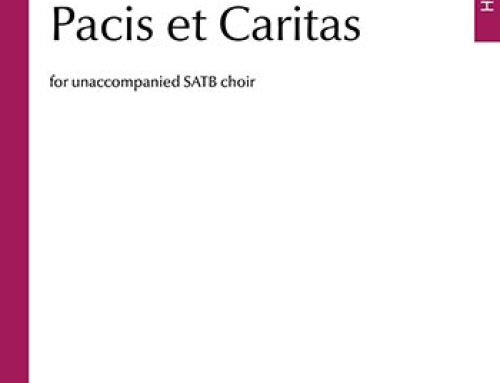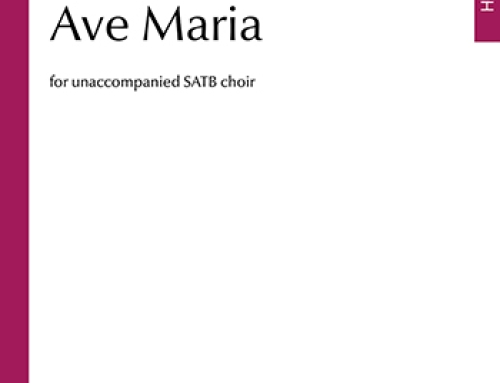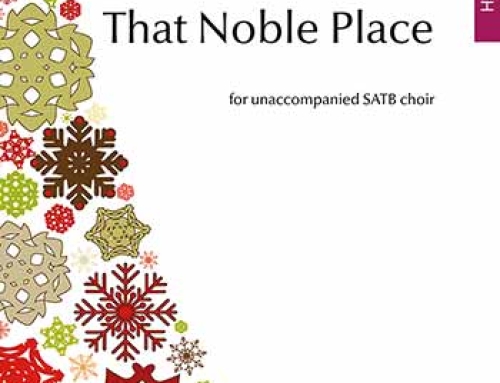The Vauday Part Songs
- The Oaks
- Stone
- The Carriageway
- In Memoriam
- Duration: 14 minutes
- Chorus: SATB unaccompanied
- Published by: Novello
The castle and park of Grimsthorpe in Lincolnshire, England which inspired The Vauday Part Songs are the products of a millennium of English history. The park itself contains the pre-history of England in the remnant of Kesteven Forest. The four poems explore the themes of time and eternity, divine purpose in human history and the nature and meaning of memory.
The Oaks opens up the scale of time taken in the creation of the Grimsthorpe landscape, describing one of the ancient ‘Kesteven’ Oaks; its free form allows for open-ended reflection. Stone, in the form of an Elizabethan Sonnet, tells the story of the key period in Grimsthorpe’s history, the dissolution of the Cistercian Abbey of Vauday, and the destruction of the Abbey by Charles Brandon to make a royal lodging. The Carriageway takes the listener on a journey through the park from the Little Bytham gates through the site of Vauday, past the lake and up to the castle. The poem is in the form of a lyrical ballad and reflects the romantic ideal of beauty at work in the design of the park. In Memoriam is the result of many hours of worship and prayer in the chapel, its free form echoing the mystical qualities of The Oaks. It touches the deep humanity at the heart of this place and community.
The Vauday Part Songs were commissioned by the St Peter’s Singers who also performed the premiere at Grimsthorpe Castle in the summer of 2005.
I. The Oaks
The landscape honours you;
Ancient and last-living.
Your sap’s tide recedes far
Beyond history’s telling.
Being still, rooted by the way,
You mock our passing present.
Listening to the language of your leaves,
We hear the sounds before music:
Ancestral voices speaking truths
In tongues we cannot understand.
II. Stone
You lay for ages hidden under ground,
Shapeless, you waited, dark and dressed in dirt.
Then for a Holy purpose you were found
And hewn, cut, measured; dressed for mason’s work.
For Abbey walls and towers you were made
To form a sacred space for heavenly sound.
Made cruciform and risen by their blades
that monks, their lives on living rock might found.
Three centuries pass, the fire of worship dies;
No more you echo as the brothers sing.
Reformers’ hammers smash and break your choir
To be rebuilt as lodging for a king.
Now for a noble purpose you lovely stand;
A nobler purpose quarried you from land.
III. The Carriageway
Horse chestnut candles light the carriageway
Which from the highest point the park surveys
The distant house that dips behind the trees,
Then sweeps through open farmland green with wheat.
The wooden bridge with white rails Vauday keeps
Separate, secret, where ancient memory sleeps.
The steep wooded valley nave-like arches high;
In dappled green cool shade the cattle lie.
Then out into the open park it runs
Past shining water drowned in morning sun,
And, high above, the house all stately stands
And crowns the oak-dressed pasture land.
The journey made through park and wooded grange
Pass by a thousand years of chance and change.
The carriageway in classic splendour ends,
Proving the certain permanence of men.
IV. In Memoriam
Here
sorrow seeks solace
and tender memories refine;
light falls in from windows
set on high;
windows that deny
the outside eye.
Here
in this house
of many rooms
is one of still simplicity;
a place where
the yolk of life’s complexity
is set upon His shoulder.
Here,
holiness
is honoured,
and history
remembered
in the one
remembering.
Here
when doors are closed
the sweetest
deepest silence
is received;
that echoes
with the Word
begotten
before time.
Words: Andrew Hawes (1954 – )






